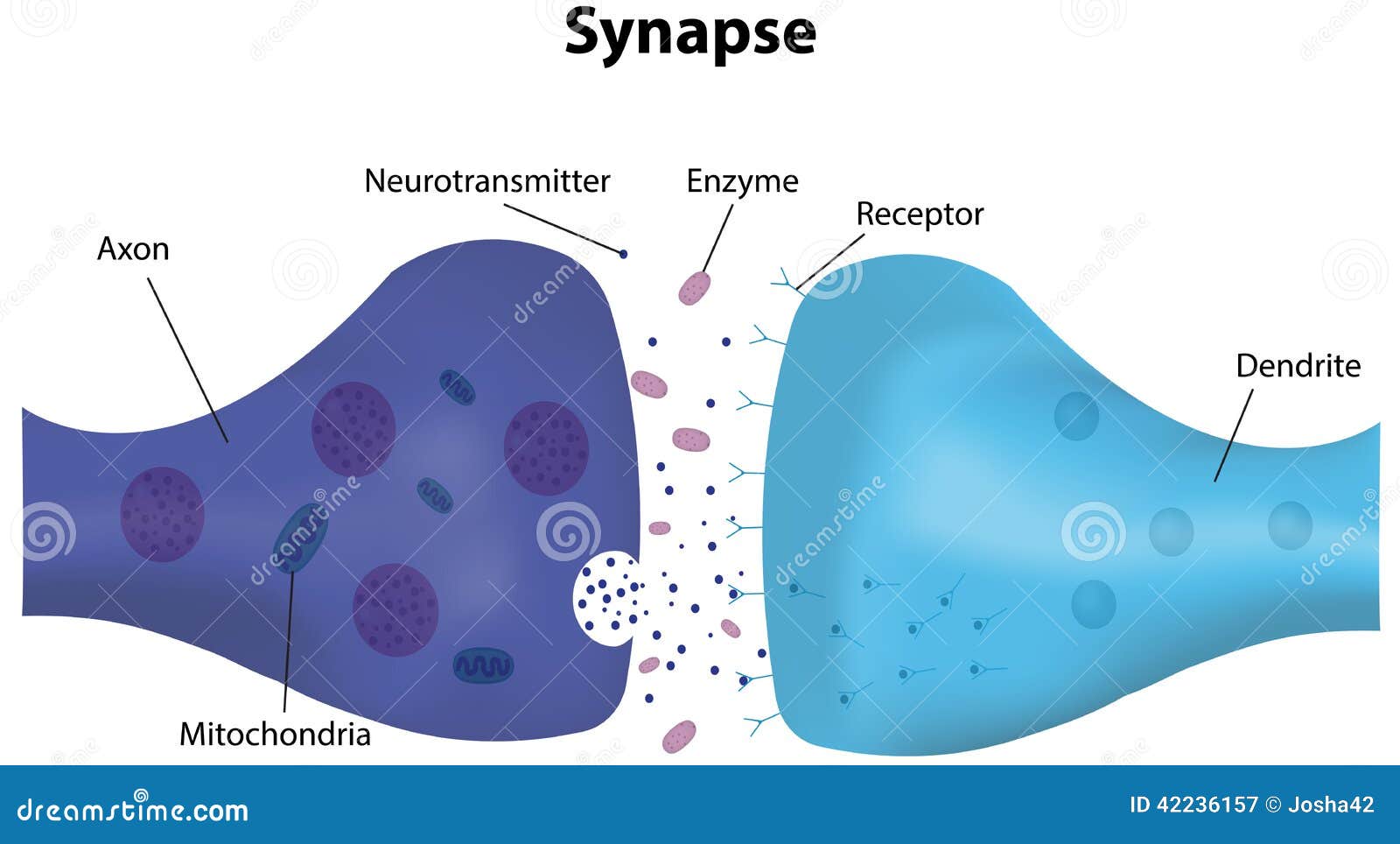Biopsychology: Neurons
- Created by: theninjaemu
- Created on: 25-01-17 14:38
Neuron Functions and Types
Functions of neurons:
- 100 billion neurons are in the human nervous system. 80% of these are located in the brain
- Neurons transmit signals electrically and chemically
- They provide the nervous system with its primary means of communication
3 types of neuron:
Motor neurons connect the central nervous system (CNS) to effectors such as muscles and glands. They have short dendrites and long axons.
Sensory neurons carry messages from the peripheral nervous system (PNS) to the CNS. They have long dendrites and short axons
Relay neurons connect sensory neurons to to motor or other relay neurons. They have short dendrites and short axons.
Structure of Neurons
All neurons share the same basic structure:
- Cell body includes a nucleus which contains the genetic material of a cell
- Dendrites are branch-like structures which protrude from the cell body. They carry nerve impulses from neighboring neurons towards the cell body
- Axon carries the electrical impulse away from the cell body down the length of the neuron. It has 2 other components:
- Myelin sheath is a fatty layer that protects the axon
- Nodes of Ranvier are gaps between the myelin sheath that speed up the transmission of the impulse
- Terminal buttons at the end of the axon connect with the next neuron in the chain via the synapse
Electric Transmission
When a neuron is in a resting state, the inside of the cell is negatively charged compared to the outside of the cell which is positively charged
When a neuron is activated, the inside of the cell becomes positively charged for a split second. This causes an action potential to occur.
This creates an electrical impulse that travels down the axon towards the end of the neuron.
Synapses and Chemical Transmission
Synapse: A gap which separates 2 neurons from eachother

Chemical Transmission
- Signals within neurons are transmitted electrically, but signals across synapses are chemical
- When the electrical impulse reaches the presynaptic neuron, it triggers the release of neurotransmitter from synaptic vesicles
- Once the neurotransmitter crosses the synapse, it is taken up by the postsynaptic receptor site on the next neuron
- The cemical signal is converted back into an electrical impulse and the process of electric transmission begins
Neurotransmitters
Neurotransmitters: Chemicals that diffuse accross the synapse to the next neuron in the chain
Each neurotransmitter has its own specific molecular structure that fits perfectly into a post-synaptic receptor site.
Each one also has its own specific functions, for example:
- Acetylcholine (ACh) is found where a motor neuron meets a muscle. ACh causes a muscle to contract
- Serotonin affects mood and social behaviour. It has been linked to depression.
Excitation and Inhibition
Neurotransmitters have either an excitatory or inhibitory effect on a neighbouring neuron:
- Adrenaline has an excitatory effect, because it increases the positive charge of a postsynaptic neuron, which makes it more likely that the neuron will fire
- Serotonin has an inhibitory effect, because it increases the negative charge of a postsynaptic neuron, which makes it less likely that the neuron will fire
Dopamine is an unusual neurotransmitter, as it is equally likely to have an excitatory or inhibitory effect on a neighbouring neuron.
Related discussions on The Student Room
- struggling to revise biopsych »
- AQA A Level Psychology Paper 2 7182/2 - 8 Jun 2022 [Exam Chat] »
- Aqa a level psychology »
- Need help with A level psychology 16 marker! »
- Psychology paper 2 »
- Aqa a level psychology exemplar essays request »
- Hardest a level psychology topics »
- AQA A-level Psychology Paper 2 (7182/2) - 25th May 2023 [Exam Chat] »
- Synoptic Question - Psychology AQA GCSE »
- my a-level journey 🧸♡🍪 »
Comments
No comments have yet been made